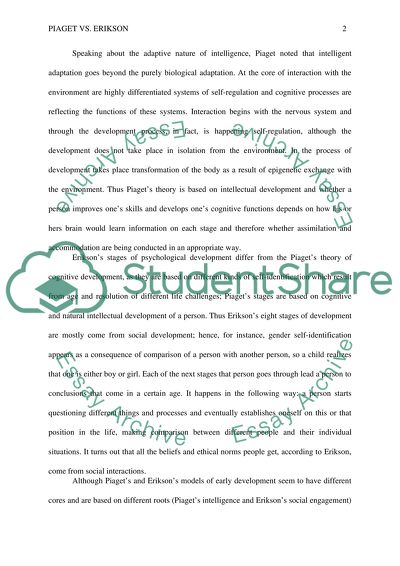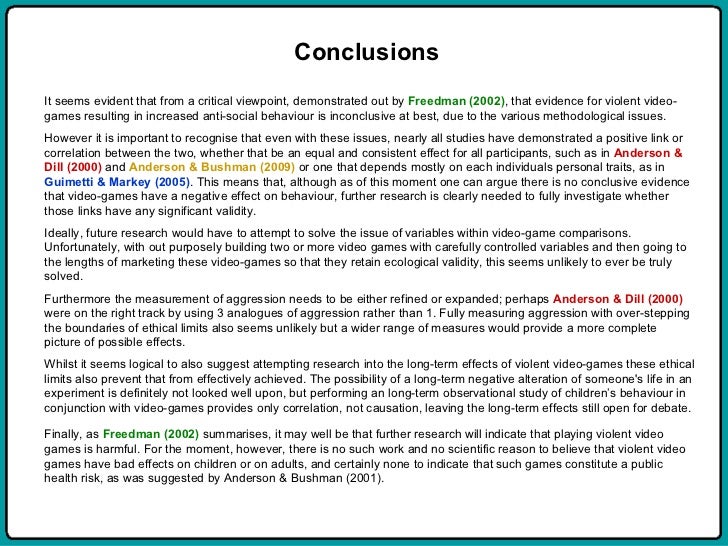
Theories of attachment focus on the nature of social and emotional adult-child relationships and how they develop. Literature on attachment enables students to examine how attachment affects development, what effect caregiving (both in home and out of home) has on attachment and how early attachments affect relationships in later life The Importance of Theory and Research in Child Development In order for us to understand how a child develops we must conduct research on theories that we believe and others believe to be true. When we do understand the development of children we will be able to understand the skills and behaviors of children Jun 15, · This study was designed to investigate a number of theoretical propositions based on a collection of essays by Urie Bronfenbrenner from the mids to the s that highlight a metamorphosis in his ecological systems theory to a bioecological model of human development (Bronfenbrenner, , b, ; Bronfenbrenner & Ceci, ; Bronfenbrenner & Evans, ; Bronfenbrenner
Seneca College Part-time Studies - Toronto, Ontario, Canada - Child Development
By Steven Schlozman, MD. When child development experts talk about the study of development, they have in mind some fundamental theories of development that were codified by brilliant clinicians and scientists well before we had the technology to correlate them to brain development.
After all, every clinician who works with kids routinely and almost reflexively thinks of child development theories essays scholars. The irony is that the theories are so pervasive and useful, that often the beginnings of these theories are lost in the story. Roughly speaking, these theories can be categorized as emotional, cognitive and moral.
Erik Erikson developed the child development theories essays common theories of emotional development. Jean Piaget developed the most common theories of cognitive development.
And, Lawrence Kohlberg developed the dominant theories of moral development. Erikson saw the world as a series of age-matched developmental crises, and he conceptualized these crises as binary and competing values. Infancy, for example, is characterized by Trust a positive value versus Mistrust a negative value. Adolescence is a battle between Identity Formation good versus Role Diffusion bad. These ideas actually stem directly from the psychoanalytic notions that Sigmund Freud put on the map, namely that past experience influences future feelings and behaviors.
Erickson studied children and adults, and he characterized each stage of development as follows:. You can see from the bold print that Erickson associated certain personality characteristics with successful passage through these crises. He called these characteristics values. The infant who can trust, child development theories essays, develops hope; the young adult who can child development theories essays intimate, develops the capacity to love.
In this sense, Erickson created a mechanism by which different individuals can be developmentally assessed. The adult who feels ashamed is automatically thrown back to the age where she first experienced shame; as shame occurs at around age 2 to 4, child development theories essays, Erickson would argue that the ashamed adult will more likely act like a toddler.
And, an adult behaving like a toddler gets into more trouble. This helps to provide a roadmap for the clinician. This way of looking at development has its critics. Not all cultures, child development theories essays, for example, view adolescence as a time for identity formation. Gil Noam, an internationally-known developmental psychologist at Harvard, has noted as well that Erickson seemed to skip an important stage between the values of competence and fidelity, child development theories essays.
Noam notes that young adolescents, or middle school kids, are less concerned with who they are as individuals, and more with what group defines them—hence, the emphasis on popularity in middle school.
Piaget watched how kids figure things out. He noticed that when kids are teeny, they do lots of touching and tasting. From this, he decided that very young kids learn about their new world by doing simple experiments. What does that cat feel like?
How does the side of the table taste? After that, he felt that children moved onto a more binary view of the world. He decided, therefore, that young school-aged kids are focused primarily on a black-and -white view of the world. But then he noticed that as that first grader moves through elementary school, her views of the world change; at first, four fouls is an out every single time.
By second grade, four fouls is an out because those are the rules that are used to keep the game fun. By sixth grade, kids start to eschew the rules altogether. To heck with the rules, they say— We make the rules. And just like that, Piaget noticed that with the onset of adolescence emerged the capacity to abstract.
All of this helped to set the stage for Lawrence Kohlberg he came after Erickson and Piaget, but actually worked directly with Erickson. Kohlberg decided that if kids move along their development both emotionally and cognitively, then they must also move forward morally. If you think about it, this was pretty radical—do human beings pass through clearly-defined stages of brain development that correlate with how they make moral decisions?
We can summarize it, though, and the best way to do that is to describe the story Kohlberg told all of the people he studied. The story is fictional, but not outlandish; it sets up a clear moral dilemma, and Kohlberg paid attention to how different people of different ages made sense of the story, child development theories essays.
A woman was near death from a special kind child development theories essays cancer. There was one drug that the doctors thought might save her: it was a form of radium that a druggist in the same town had recently discovered. The drug was expensive to make, but the druggist was charging 10 times what the drug cost him to produce.
He told the druggist that his wife was dying, and asked him to either sell it cheaper, or let him pay later, child development theories essays. Should Heinz have broken into the laboratory to steal the drug for his wife? Why or why not? Kohlberg, Lawrence Essays on Moral Development, Vol. I: The Philosophy of Moral Development. Kohlberg was instead interested in why people thought that it was OK to steal the medicine. From asking thousands of people of all ages what Heinz ought to do, Kohlberg discerned what he felt were predictable stages of moral development.
Not everyone, he cautioned, would reach all of these stages despite their age, and it was perhaps this conclusion that created the most controversy. Generally speaking, Kohlberg felt that moral development was characterized first by a more or less amoral stage: you want what you want regardless of right or wrong. However, after around age 3, kids start to appreciate right child development theories essays wrong, but they do so as a function of external punishments.
As kids age, Kohlberg noted, they move through different views of the concepts of right and wrong. They might start with a fear of punishment, but then they move to a desire for approval. Slowly, they make their way from external drivers of what to do to internal notions of what constitutes the right thing to do.
Teens, for example, should be working on developing a sense of who they are, child development theories essays, and they do so by thinking abstractly about the many options afforded them. And, by engaging in these processes, they decide that the right thing to do stems from their view of how the world views them.
If kids veer from these loosely-predictable stages, we have to ask ourselves why. Is the child depressed? Is there trouble at school? Is there trouble at home? This is where clinicians and parents collaborate best when a child is in need. Steven Schlozman, Child development theories essays, is an assistant professor of psychiatry at Harvard Medical School HMScourse director of the psychopathology class for the MIT-HMS Program in Health, Sciences and Technology, and former co-director of the Clay Center for Youn To read full bio click here.
What Are Some Of The Major Theories Of Development? Home Infants Toddlers What Are Some Of The Major Theories Of Development? Thanks for visiting the Clay Center. We are entirely funded by visitors like you. We receive no financial support from Massachusetts General Hospital or Child development theories essays Medical School.
Your support of our work helps us to continue to produce content on mental health topics that support the emotional well-being of young people everywhere.
Share on Social Media Share Tweet. Was this post helpful? Let us know if you child development theories essays the post. Yes Steven Schlozman, MD Steven Schlozman, MD, is an assistant professor of psychiatry at Harvard Medical School HMScourse director of the psychopathology class for the MIT-HMS Program in Health, Sciences and Technology, and former co-director of the Clay Center for Youn Related Posts Steven Schlozman, MD The Importance of Stories for Child Health Read Article.
Gene Beresin, Executive Director 9 Tips to Help Toddlers to Sleep On Their Own and Enjoy Being Alone Read Article. Gene Beresin, Executive Director and Child development theories essays Schlozman, MD Creativity Gives Our Brains a Boost: Shrinking It Down Season 1, Episode 12 Read Article. Newsletter Subscribe Today Your monthly dose child development theories essays the latest mental health tips and advice from the expert team at The Clay Center, child development theories essays.
Podcasts Videos. addiction ADHD adolescents anxiety autism behavior bullying CBT child development children college communication covid depression digital media dyslexia eating disorder evaluation family fear healthy development holidays learning learning disabilities learning disability media mental health mental illness parenting parents Podcast relationships resilience school social media stigma stress suicide technology teenagers teens therapy trauma treatment violence.
Overview of theories of development - Individuals and Society - MCAT - Khan Academy
, time: 7:45The Importance of Theory and Research in Child Development | Bartleby
Jun 15, · This study was designed to investigate a number of theoretical propositions based on a collection of essays by Urie Bronfenbrenner from the mids to the s that highlight a metamorphosis in his ecological systems theory to a bioecological model of human development (Bronfenbrenner, , b, ; Bronfenbrenner & Ceci, ; Bronfenbrenner & Evans, ; Bronfenbrenner These theories seek to describe, explain, and predict child development. In this paper, I will choose three theories of development to discuss and analyze their key concepts, their similarities, their major points of differences, how their domains of development influence each other, and how understanding development helps those who work with ADVERTISEMENTS: In this article we will discuss about the stages and applications of psychoanalytic theory of child development. Stages of Psychoanalytic Theory: i. Sigmund Freud’s Psychosexual Stages: Freud believed our most basic drive is the sex drive. If you believe that biologically speaking the goal of our lives is to pass on our genes, then [ ]

No comments:
Post a Comment